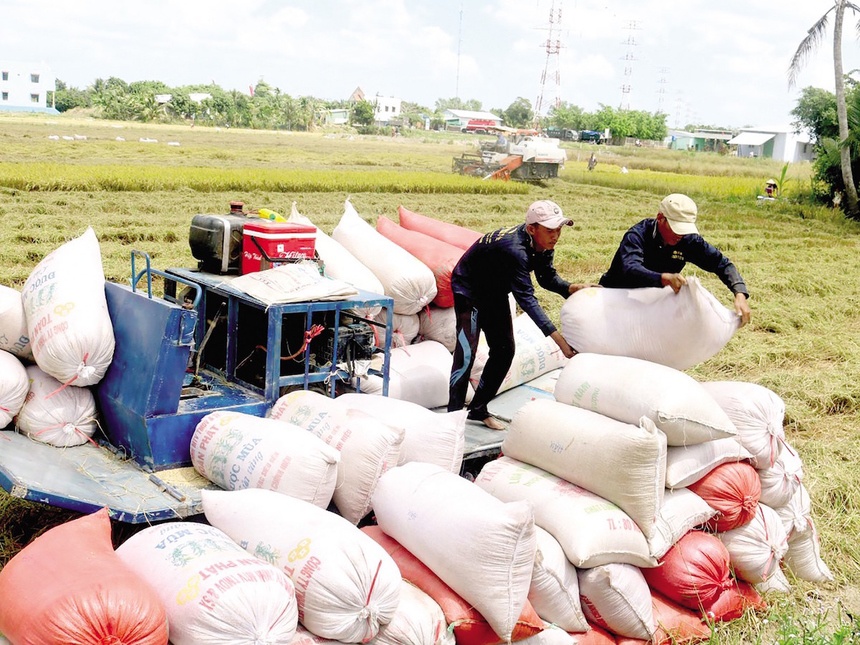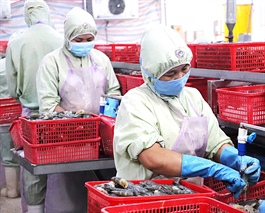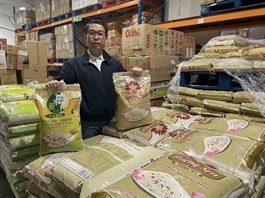Rice exports set to break records
Rice exports set to break records
According to the Ministry of Agriculture and Rural Development, rice exports in October reached 800,000 tonnes with a value of $505 million, bringing the total for the first 10 months to nearly 7.8 million tonnes at almost $4.9 billion.

The figures represent an increase of over 10 per cent in volume and 23 per cent in value compared to the same period in 2023.
The Philippines remains Vietnam's largest rice market, accounting for over 45 per cent of market share. Rice exports to the Philippines came to 2.9 million tonnes in October, representing around 80 per cent of their total rice imports of 3.7 million tonnes. Indonesia and Malaysia follow as the next largest markets. Among Vietnam's top 15 rice export markets, Malaysia showed the strongest growth, with a more than two-fold increase in export value.
Vietnam's Trade Office in the Philippines predicts that the country's demand for rice will continue to rise through the end of the year due to increased domestic consumption and weather-related damage to their year-end harvest. The Philippines' total rice imports for 2024 are forecast to exceed four million tonnes.
According to vtv.vn, Do Ha Nam, vice chairman of the Vietnam Food Association, "2024 will continue to be a strong year for Vietnamese rice exports, exceeding 8 million tonnes with a value surpassing $5 billion, the highest ever recorded."
"Prices could rise by year-end due to limited domestic supply and flood impacts. The Philippines strongly prefers Vietnamese aromatic rice, making India's increased supply unlikely to replace Vietnamese exports," said Nam.
Vietnamese enterprises secured three lots totalling 83,500 tonnes, representing 17 per cent of Indonesia's 500,000-tonne rice tender in October. Indonesia managed to obtain more favourable prices in this tender compared to previous rounds thanks to India's participation. Nonetheless, the lower quality of Indian rice compared to Vietnamese or Thai sources led to smaller successful bid volumes.
Despite India's return to the rice export race, Nam said, "This won't significantly impact Vietnamese rice prices. The rice market will remain relatively stable with low risk, as Indian rice varieties differ from Vietnamese ones. Indian rice is primarily lower-grade and exported to African markets, while Vietnamese farmers have largely converted to high-quality rice varieties."
"Vietnam is gradually developing a distinctive rice sector compared to other countries. We focus on aromatic and high-quality rice while reducing lower-grade varieties. This is progressively establishing a market position with unique products and distinct pricing," Nam said.
Phung Duc Tien, Deputy Minister of Agriculture and Rural Development, said, "India has reopened rice exports and 5 per cent broken rice has some impact. However, in the high-quality rice value chain, Vietnam maintains relatively good export prices."
China is another traditional market for Vietnam and remains inactive as prices haven't met expectations. "Chinese importers are predicted to return during the upcoming winter-spring crop, helping maintain stable output and prices for Vietnamese rice," said Tien.
Tran Thanh Hai, deputy director of Agency for Foreign Trade under the Ministry of Industry and Trade, said, "Rice remains an essential commodity globally and it presents significant future business opportunities. Export businesses must increase their adaptability and flexibility to effectively capitalise on these opportunities."




























